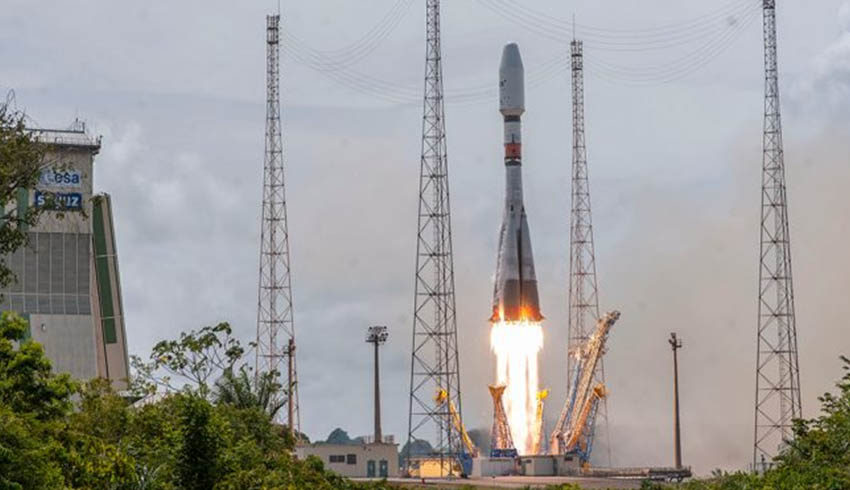
Daniel Neuenschwander, ESA’s director of space transportation, and Stéphane Israël, CEO at Arianespace, welcomed about 100 attendees to a conference last week on Ariane 6 and Vega-C at ESA-ESTEC in Noordwijk, the Netherlands.
Ariane 6’s maiden flight has already been earmarked for the launch of OneWeb’s constellation satellites, and Vega-C for the launch of LARES. Three European institutional contracts have already been signed for Ariane 6 and Vega-C launch services, with others expected in the coming months.
"Ariane 6 and Vega-C are perfectly adapted to handle complex missions and are capable of meeting every mission requirement in full complementarity," Israël explained.
Low-cost launch opportunities based on a standardised regular service offered through ESA developed payload carrying structures on Ariane 6 and on Vega/Vega-C for light satellites, from CubeSats to minisats, were also discussed in dedicated technical sessions.
The first of the new payload carrying structures, the Small Satellites Mission Service, or SSMS, aimed to meet the needs of a thriving small satellites market, is set to launch on Vega this summer providing a rideshare opportunity for seven micro-satellites and 35 CubeSats. Its following launch will be on Vega-C in 2020.
The Multi Launch System for multiple payloads offered by Ariane 6 is well under development, with an initial mission planned for 2021. Compared with the current Vega, the exploitation of Vega-C will allow more launches per year for increased performance to more orbits.
Ariane 6 will come in two configurations (Ariane 62 with two boosters and 64 with four boosters), depending on mission requirements, to respond to institutional and market demand based on the Ariane 5 heritage and reliability.
Receive the latest developments and updates on Australia’s space industry direct to your inbox. Subscribe today to Space Connect here.









